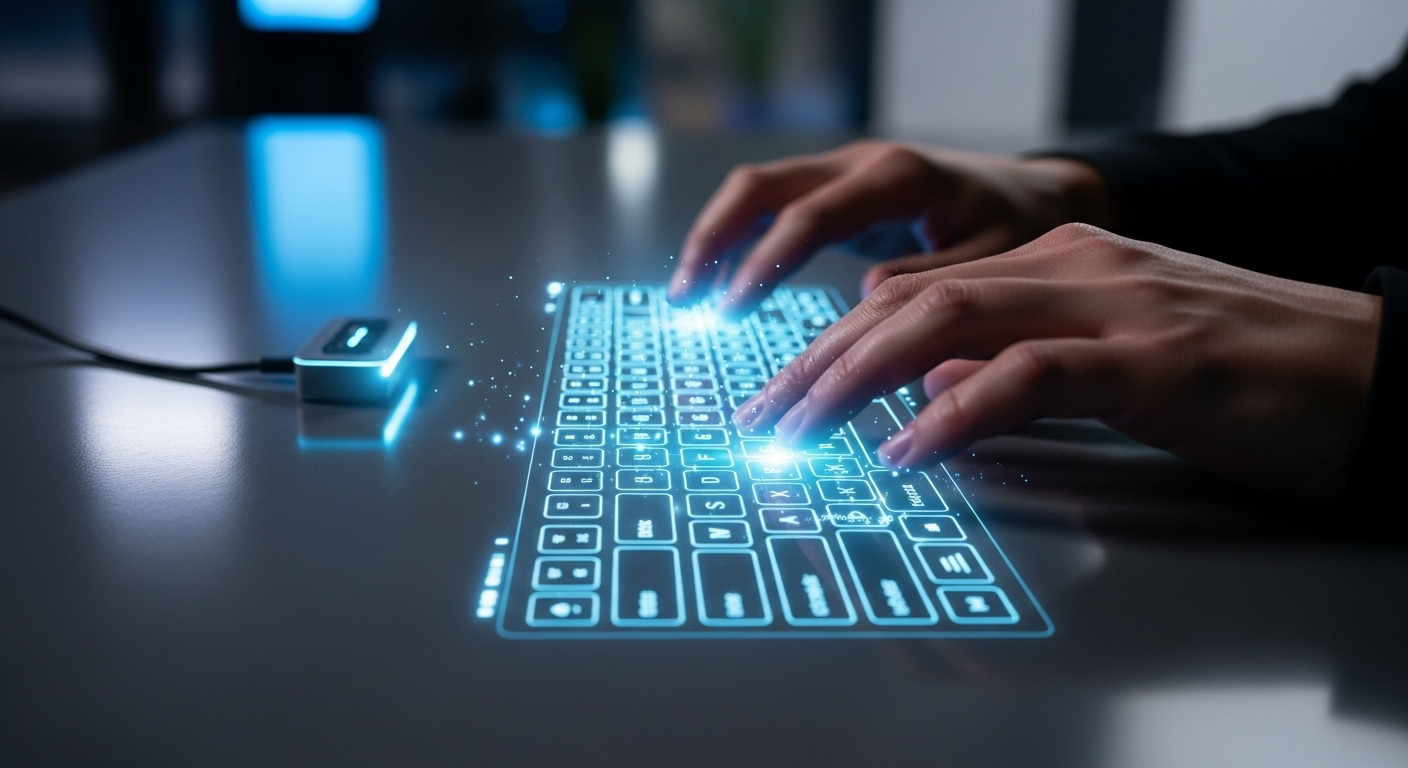Holographic Keyboards: Typing in Thin Air
In an era where technology continues to push boundaries, holographic keyboards are emerging as a futuristic input method that could revolutionize how we interact with our devices. These ethereal interfaces project a virtual keyboard onto any flat surface, allowing users to type and navigate without physical hardware. As we delve into this cutting-edge technology, we'll explore its potential to transform computing, its current limitations, and the exciting possibilities it holds for the future of human-computer interaction.

The concept first gained traction in the early 2000s when researchers began experimenting with projecting keyboard layouts onto surfaces. These early prototypes used cameras to track finger movements, but they were often inaccurate and suffered from lag. It wasn’t until the 2010s that more sophisticated sensors and algorithms made holographic keyboards a viable input option.
How Holographic Keyboards Work
At their core, holographic keyboards utilize a combination of projection technology and infrared sensors. A small projector casts the image of a keyboard onto a flat surface, while an infrared light creates a plane just above the projected image. When a user’s fingers break this plane, cameras capture the movement and translate it into keystrokes.
The system relies on complex algorithms to interpret the user’s intent, distinguishing between typing motions and accidental movements. This process happens in milliseconds, providing a near-instantaneous response that mimics the feel of typing on a physical keyboard.
Current Market Offerings and Limitations
While holographic keyboards are not yet mainstream, several companies have introduced consumer-ready products. These devices typically come in the form of small, portable projectors that can connect to smartphones, tablets, or laptops via Bluetooth.
Pricing for these gadgets ranges from $100 to $300, positioning them as premium accessories for tech enthusiasts. However, adoption has been slow due to several limitations:
-
Accuracy: Even with advanced algorithms, holographic keyboards can struggle with precision, especially for fast typists.
-
Tactile Feedback: The lack of physical keys means users miss out on the tactile sensation of typing, which can affect speed and accuracy.
-
Lighting Conditions: Bright environments can make the projected keyboard difficult to see, limiting usability in outdoor settings.
Potential Applications Beyond Traditional Computing
Despite current limitations, holographic keyboards have the potential to transform various industries:
-
Medicine: In sterile environments like operating rooms, touchless interfaces could reduce the risk of contamination.
-
Manufacturing: Workers could access information and input data without removing protective gloves.
-
Public Spaces: Holographic kiosks could provide hygienic, vandal-resistant interfaces for information terminals and ticketing systems.
-
Augmented Reality: As AR technology advances, holographic keyboards could become an intuitive way to interact with virtual environments.
The Future of Holographic Input
As technology continues to evolve, we can expect significant improvements in holographic keyboard performance. Research is underway to incorporate haptic feedback, using ultrasonics to create the sensation of pressing keys in mid-air. This could address one of the technology’s main drawbacks and provide a more natural typing experience.
Additionally, advancements in AI and machine learning could lead to more accurate prediction and correction of typing errors, potentially making holographic keyboards even more efficient than their physical counterparts.
Challenges and Ethical Considerations
While the prospect of typing in thin air is exciting, it also raises questions about privacy and security. Unlike traditional keyboards, holographic interfaces project potentially sensitive information into the environment. Developers will need to address concerns about data protection and find ways to ensure that keystrokes cannot be easily observed or intercepted by malicious actors.
There’s also the question of accessibility. How will holographic keyboards accommodate users with visual impairments or limited motor skills? As this technology becomes more prevalent, ensuring inclusivity will be crucial.
Conclusion: A Glimpse into Tomorrow’s Interface
Holographic keyboards represent a fascinating convergence of optics, sensors, and software, offering a glimpse into the future of human-computer interaction. While they may seem like a novelty today, the potential applications across various industries suggest that this technology could become an integral part of our digital lives.
As we move towards more immersive and flexible computing environments, holographic keyboards could play a pivotal role in bridging the physical and digital worlds. Whether we’ll all be typing in mid-air in the near future remains to be seen, but one thing is certain: the way we interact with our devices is evolving, and holographic interfaces are at the forefront of this transformation.





